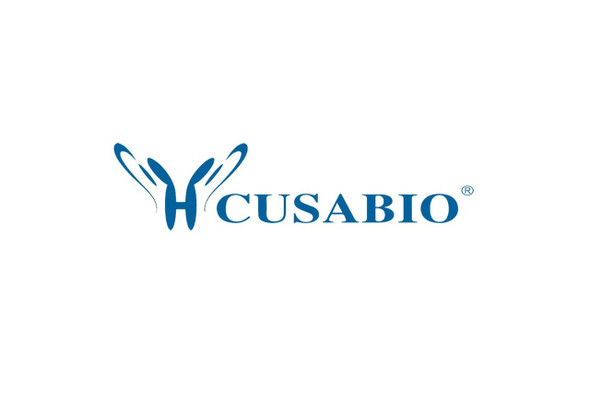Cusabio Human Recombinants
Recombinant Human Protein unc-119 homolog A (UNC119) | CSB-EP622658HU
- SKU:
- CSB-EP622658HU
- Availability:
- 13 - 23 Working Days
Description
Recombinant Human Protein unc-119 homolog A (UNC119) | CSB-EP622658HU | Cusabio
Alternative Name(s): Retinal protein 4 Short name: hRG4
Gene Names: UNC119
Research Areas: Neuroscience
Organism: Homo sapiens (Human)
AA Sequence: MKVKKGGGGAGTATESAPGPSGQSVAPIPQPPAESESGSESEPDAGPGPRPGPLQRKQPIGPEDVLGLQRITGDYLCSPEENIYKIDFVRFKIRDMDSGTVLFEIKKPPVSERLPINRRDLDPNAGRFVRYQFTPAFLRLRQVGATVEFTVGDKPVNNFRMIERHYFRNQLLKSFDFHFGFCIPSSKNTCEHIYDFPPLSEELISEMIRHPYETQSDSFYFVDDRLVMHNKADYSYSGTP
Source: E.coli
Tag Info: N-terminal 6xHis-SUMO-tagged
Expression Region: 1-240aa
Sequence Info: Full Length
MW: 43 kDa
Purity: Greater than 90% as determined by SDS-PAGE.
Relevance: Involved in synaptic functions in photoreceptor cells, the signal transduction in immune cells as a Src family kinase activator, endosome recycling, the uptake of bacteria and endocytosis, protein trafficking in sensory neurons and as lipid-binding chaperone with specificity for a diverse subset of myristoylated proteins. Specifically binds the myristoyl moiety of a subset of N-terminally myristoylated proteins and is required for their localization. Binds myristoylated GNAT1 and is required for G-protein localization and trafficking in sensory neurons. Probably plays a role in trafficking proteins in photoreceptor cells. Plays important roles in mediating Src family kinase signals for the completion of cytokinesis via RAB11A.
Reference: "Cloning of the cDNA for a novel photoreceptor protein."Higashide T., Murakami A., McLaren M.J., Inana G.J. Biol. Chem. 271:1797-1804(1996)
Storage: The shelf life is related to many factors, storage state, buffer ingredients, storage temperature and the stability of the protein itself. Generally, the shelf life of liquid form is 6 months at -20?/-80?. The shelf life of lyophilized form is 12 months at -20?/-80?.
Notes: Repeated freezing and thawing is not recommended. Store working aliquots at 4? for up to one week.
Function: Involved in synaptic functions in photoreceptor cells, the signal transduction in immune cells as a Src family kinase activator, endosome recycling, the uptake of bacteria and endocytosis, protein trafficking in sensory neurons and as lipid-binding chaperone with specificity for a diverse subset of myristoylated proteins. Specifically binds the myristoyl moiety of a subset of N-terminally myristoylated proteins and is required for their localization. Binds myristoylated GNAT1 and is required for G-protein localization and trafficking in sensory neurons. Probably plays a role in trafficking proteins in photoreceptor cells. Plays important roles in mediating Src family kinase signals for the completion of cytokinesis via RAB11A.
Involvement in disease: Immunodeficiency 13 (IMD13)
Subcellular Location: Cytoplasm, cytoskeleton, microtubule organizing center, centrosome, Cytoplasm, cytoskeleton, spindle pole, Cytoplasm, cytoskeleton, spindle
Protein Families: PDE6D/unc-119 family
Tissue Specificity: Abundantly expressed in retina, in photoreceptor synapses and inner segments. Expressed in a much lesser extent in several other tissues.
Paythway:
Form: Liquid or Lyophilized powder
Buffer: If the delivery form is liquid, the default storage buffer is Tris/PBS-based buffer, 5%-50% glycerol. If the delivery form is lyophilized powder, the buffer before lyophilization is Tris/PBS-based buffer, 6% Trehalose, pH 8.0.
Reconstitution: We recommend that this vial be briefly centrifuged prior to opening to bring the contents to the bottom. Please reconstitute protein in deionized sterile water to a concentration of 0.1-1.0 mg/mL.We recommend to add 5-50% of glycerol (final concentration) and aliquot for long-term storage at -20?/-80?. Our default final concentration of glycerol is 50%. Customers could use it as reference.
Uniprot ID: Q13432
HGNC Database Link: HGNC
UniGene Database Link: UniGene
KEGG Database Link: KEGG
STRING Database Link: STRING
OMIM Database Link: OMIM









